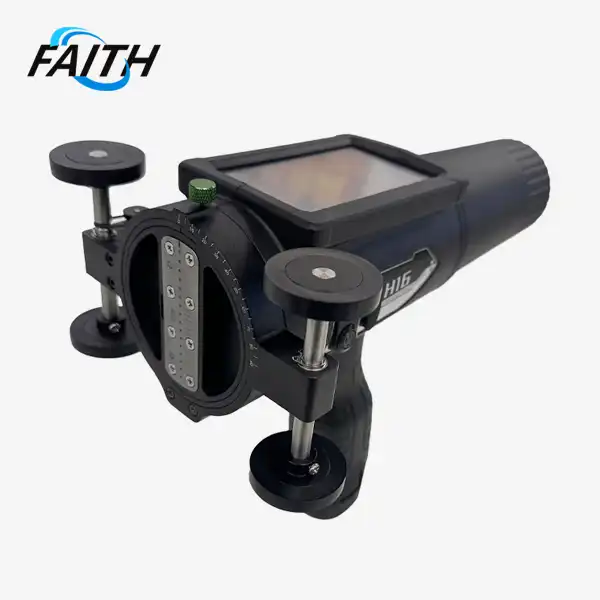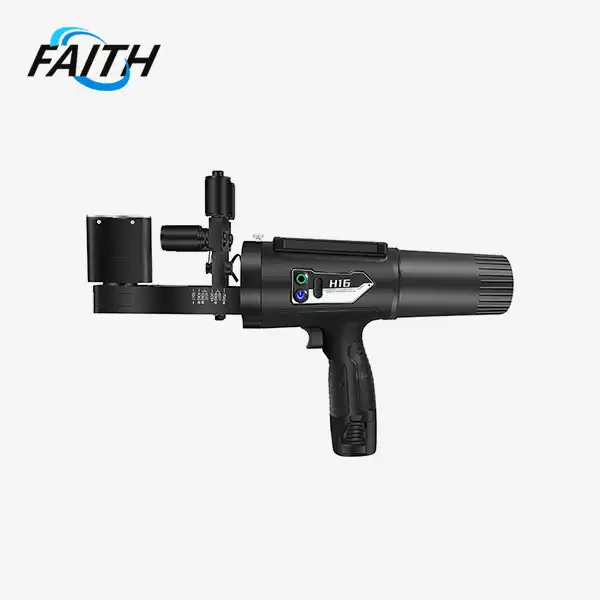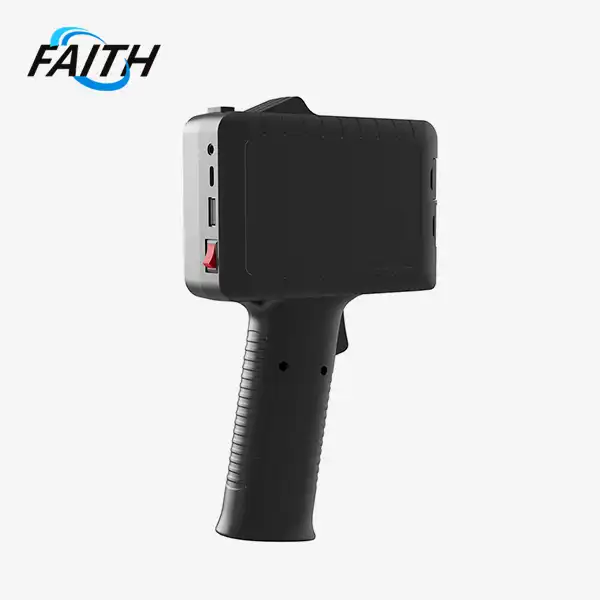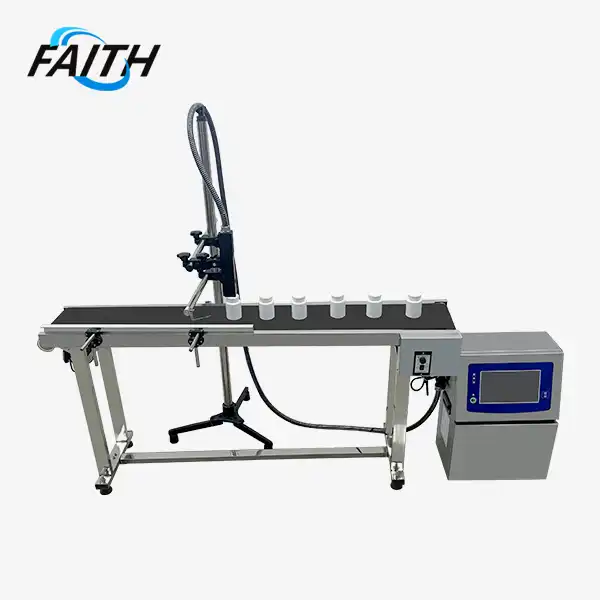Is CIJ the Right Choice for Your Food Product Labels?
In the fast-paced world of food and beverage packaging, choosing the right labeling technology is crucial for ensuring product quality, compliance, and efficiency. Continuous Inkjet (CIJ) printing has emerged as a popular choice for many manufacturers in this industry. But is it the right solution for your specific needs? Let's delve into the world of CIJ for the food and beverage packaging industry and explore its benefits, applications, and considerations for food product labeling.
Understanding CIJ Technology in Food Packaging
Continuous Inkjet (CIJ) technology is a non-contact printing method that uses electrically charged ink droplets to create high-quality marks on various substrates. In the food and beverage industry, CIJ printers are widely used for applying date codes, batch numbers, barcodes, and other essential information on packaging materials.
The CIJ process begins with a pump that creates a steady stream of ink. This ink stream passes through a piezoelectric crystal, which vibrates at high frequencies, breaking the stream into tiny droplets. These droplets are then electrically charged and deflected by electrostatic plates to form the desired characters on the packaging surface.
One of the key advantages of CIJ for the food and beverage packaging industry is its versatility. It can print on a wide range of materials, including plastics, glass, metal, and paper, making it suitable for various food packaging types. Moreover, CIJ printers can operate at high speeds, keeping pace with rapid production lines common in the food industry.
Benefits of CIJ for Food Product Labeling
CIJ technology offers several benefits that make it an attractive option for food product labeling:
- High-Speed Printing: CIJ (Continuous Inkjet) printers can produce up to 70,000 droplets per second, enabling rapid coding on fast-moving production lines. This high-speed capability is essential for industries that require quick, efficient marking without slowing down production, such as in food and beverage or pharmaceutical sectors.
- Versatility: CIJ printers can print on a wide range of surfaces, both flat and curved, making them highly versatile. Whether printing on bottles, cartons, or flexible packaging, CIJ systems adapt easily to various shapes and materials, ensuring seamless integration into diverse packaging lines.
- Non-Contact Printing: One of the key advantages of CIJ printing is its non-contact nature. The printhead doesn’t touch the product, reducing the risk of contamination or damage to delicate packaging. This is particularly beneficial in industries where hygiene and product integrity are critical.
- Durability: CIJ inks are available in specialized formulations designed to resist fading, smearing, and abrasion. This ensures that the printed codes remain legible throughout the product's shelf life, maintaining brand visibility and traceability.
- Cost-Effective: CIJ printers offer a lower cost per print compared to many other printing technologies. This makes them an economical choice for high-volume production, helping businesses reduce operational costs while maintaining high-quality coding.
- Customization: CIJ systems allow for easy adjustments to print content, enabling quick changes between different product runs or batches. This flexibility supports dynamic production environments, where product specifications may frequently change.
Considerations When Choosing CIJ for Food Packaging
While CIJ for the food and beverage packaging industry offers numerous benefits, it's essential to consider several factors when deciding if it's the right choice for your food product labels:
- Regulatory Compliance: Ensure that the CIJ system and inks comply with relevant food safety regulations and standards in your region. This includes verifying that the inks used are non-toxic, safe for direct or indirect food contact, and meet specific industry certifications to guarantee the safety of your products.
- Print Quality Requirements: Consider whether the CIJ printer can deliver the necessary print quality and resolution for your specific labeling needs. High-resolution printing may be crucial for legible barcodes, expiration dates, or branding, especially in industries with strict labeling requirements.
- Production Environment: Evaluate how well the CIJ system performs under the specific conditions of your production environment. Factors such as temperature fluctuations, humidity, and exposure to cleaning agents can affect the printer’s reliability and the durability of the printed codes, so ensure the system is built to withstand these conditions.
- Maintenance and Upkeep: Factor in the maintenance requirements of the CIJ for the food and beverage packaging industry system, including regular cleaning and ink replenishment. While CIJ printers are generally low-maintenance, understanding the associated costs and time needed for upkeep is essential to avoid unplanned downtime and ensure optimal performance.
- Integration with Existing Systems: Assess how easily the CIJ printer can be integrated into your current production line. Check for compatibility with existing equipment, automation systems, and software to streamline the installation process and avoid production interruptions.
- Future Scalability: Consider whether the CIJ system can accommodate future changes in your production needs or packaging designs. The ability to scale and adapt to new product lines or packaging formats will ensure the system remains valuable as your business grows and evolves.
Conclusion
Continuous Inkjet (CIJ) technology offers a powerful and versatile solution for food product labeling. Its high-speed capabilities, adaptability to various substrates, and cost-effectiveness make it a popular choice in the food and beverage packaging industry. However, the decision to implement CIJ should be based on a thorough assessment of your specific needs, regulatory requirements, and production environment.
If you're considering CIJ for the food and beverage packaging industry or seeking expert advice on industrial coding solutions, don't hesitate to reach out to us at Shenyang Faith Technology Co., Ltd. Our team of specialists can help you determine the best labeling solution for your unique requirements. Contact us at sale01@sy-faith.com to learn more about our CIJ printers and other innovative coding technologies.
References
1. Smith, J. (2022). Advanced Coding Technologies in Food Packaging: A Comprehensive Review. Journal of Food Science and Technology, 59(4), 1123-1138.
2. Johnson, A., & Williams, R. (2021). Continuous Inkjet Printing: Applications and Challenges in the Food Industry. Packaging Technology and Science, 34(2), 78-92.
3. Brown, L. M. (2023). Comparative Analysis of Labeling Technologies for Food Products: CIJ, TIJ, and Laser Coding. International Journal of Food Engineering, 19(3), 301-315.
4. Garcia, E., & Lopez, F. (2020). Food Safety and Traceability: The Role of Modern Coding Technologies. Food Control, 112, 107-121.
5. Thompson, S. K. (2022). Sustainability in Food Packaging: Evaluating the Environmental Impact of Different Labeling Methods. Journal of Cleaner Production, 330, 129-143.
Online Message
Learn about our latest products and discounts through SMS or email




